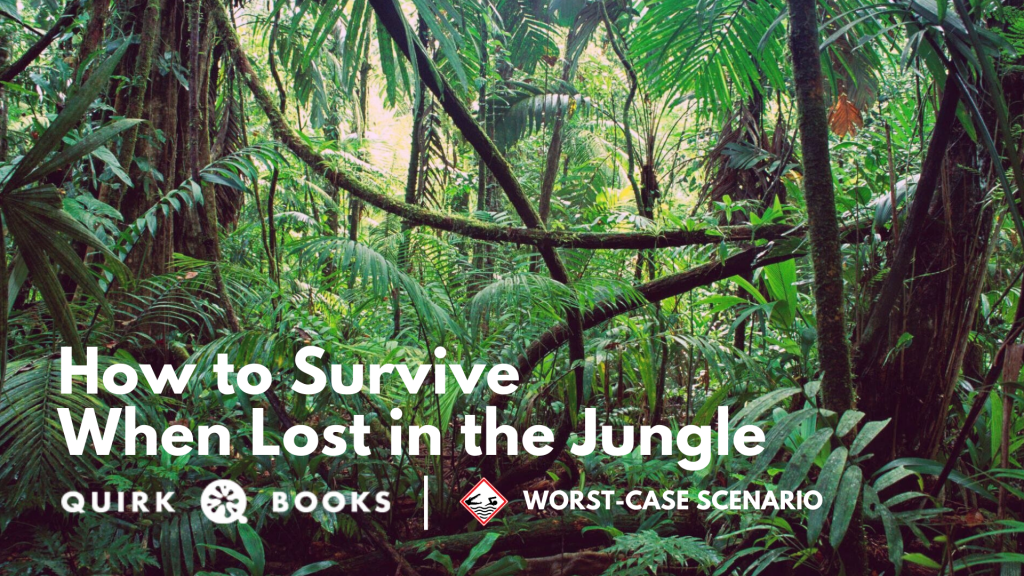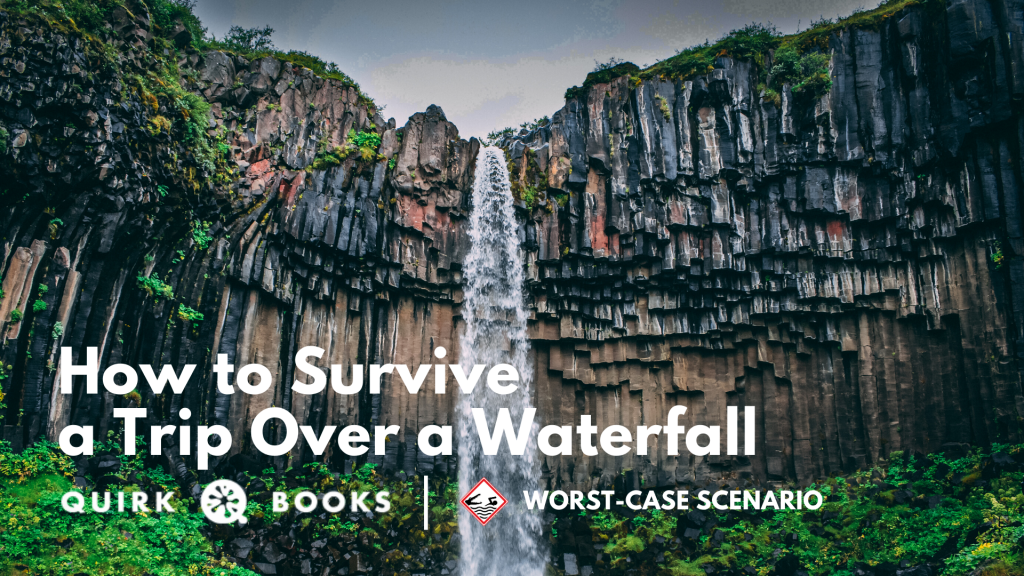Summer Survival Week: How to Survive When Lost in the Jungle
(Header image created via Canva)
It’s highly unlikely that you will find yourself lost in the jungle because of a board game, but just in case, here’s how to survive.

HOW TO FIND CIVILIZATION
- Find a river:
Generally, animal trails will lead you to water. Water is the key to jungle navigation and usually the quickest way to travel.
- Fashion a makeshift raft:
You will need two tarps or ponchos, green brush, two large saplings, and ropes or vines. Tie rope to the corners of one tarp. Pile fresh green brush 18 inches high all around. Place two saplings across the brush in an X. Pile another 18 inches of brush atop the X. Compress the brush. Pull the sides of the tarp tightly around the pile, and tie diagonally. Place another tarp on the ground. Put the bundle open-side down in the center of the tarp on the ground. Tie tightly as shown in image above. Use the raft rope-side up.
- Let the current carry you downstream.
- Watch closely for signs of villages or settlements:
Many jungle settlements and villages are located along the shores or rivers.
HOW TO FIND FOOD AND WATER
- If you do not have the means to purify water, cut sections from large water vines, or cut banana trees, and capture the water welling out of the stalks:
Only drink water from streams and rivers as a last resort, when dehydration and death are a near certainty. Diarrhea will most likely result, so increase your water intake and keep moving.
- If you cannot peel it or cook it, do not eat it:
Avoid brightly colored plants or plants with a milky sap (many of these are poisonous). Insects, grubs, and raw fish (except those with bristles or spines rather than scales) are safe to eat. Look for grubs and insects beneath rotting logs and vegetation. Pinch the heads off and eat them raw. Peel fruits carefully before eating; the peels may harbor diarrhea-causing bacteria.
HOW TO TRAVEL OVER LAND
- Mark your trail by breaking and turning over fresh vegetation. This will reveal the bright undersides of leaves and will leave a clear trail should you need to backtrack.
- Look for shelter during bad weather. Large hollow tree buttresses can often be used. Line the ground with palm fronds, and stand several more palm fronds over the opening. Note: Do not build this shelter under a tall tree during a thunderstorm because of lightning danger.
- Be prepared for the dangers of the jungle. Most jungle creatres (such as big cats and snakes) want to avoid you as much as you do them. The real danger comes from the smallest creatures: scorpions, ants, flies, mosquitoes, and the bacteria in water and on fruit. The best defense against bites and stings is to watch where you put your hands and feet. Ants rule the jungle, so do not camp for the night in their line of travel or near nests. Never touch any brightly colored amphibians. Many, like the poison dart frog, have a powerful toxin in their skin, and any contact can make you very ill.
BE AWARE
- Before traveling to a remote area, take the time to look at any available maps. Pay attention to topography and any roads or waterways nerby. If you get lost, you will need to know what general direction of travel will intersect a road or waterway and thus, eventually, civilization.
- The jungle canopy can totally occlude the sun, so a compass may be your only means of determining direction. The same heavy canopy will make it impossible for would-be rescuers to find you, or even to locate a downed aircraft. Unlike being lost in a wilderness situation, staying put in the jungle means virtually certain death.
- To make a natural insect repellent, you can use a termite nest. These nests are abundant on the ground and in trees. They resemble irregular-shaped dirt mounds the size of 55-gallon barrels. Break up the mounds (they look like dirt but are actually digested wood) and rub the material on your skin.
For more Worst-Case Scenario content, go to WorstCaseScenario.com!
(Excerpt from The Worst-Case Scenario Survival Handbook: Travel.)



